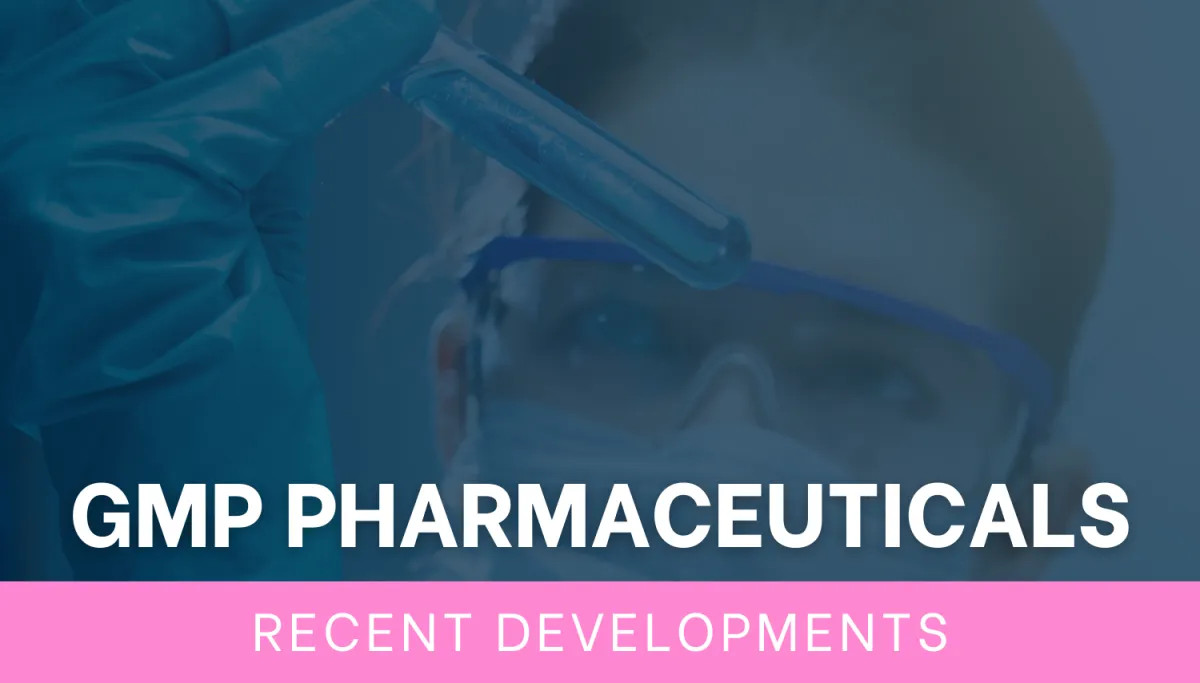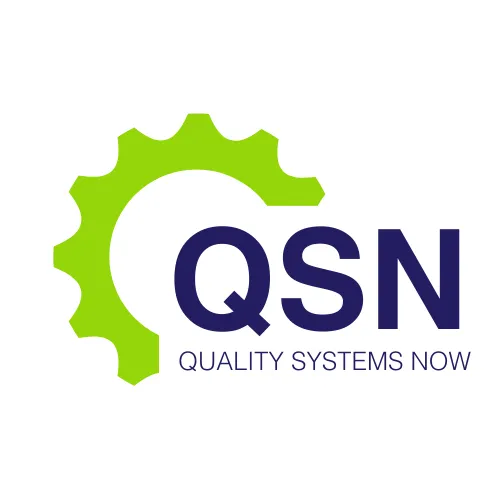LATEST NEWS

Good Manufacturing Practice (GMP) - Pharmaceuticals - Recent Developments
Good Manufacturing Practice (GMP) plays a crucial role in ensuring the quality, safety, and efficacy of pharmaceutical products. GMP is a set of guidelines and regulations that dictate the processes and systems needed to consistently produce pharmaceutical products that meet required standards. As the pharmaceutical industry continues to evolve, GMP regulations are also undergoing significant updates and improvements to keep pace with technological advancements, regulatory changes, and global health challenges. This article explores the recent developments in GMP for the pharmaceutical industry, highlighting key updates, emerging trends, and the implications for companies striving to maintain compliance and improve manufacturing practices.
Understanding Good Manufacturing Practice (GMP)
GMP refers to the practices required in the manufacturing of pharmaceuticals to ensure that products are produced and controlled according to quality standards. These guidelines address various aspects of production, including raw material sourcing, production processes, equipment maintenance, quality control, and employee training. GMP regulations are essential for minimizing the risks associated with the production of pharmaceutical products, such as contamination, errors, and inconsistency.
The primary goal of GMP is to ensure that pharmaceutical products are produced under controlled conditions and are consistently of the highest quality. Compliance with GMP regulations is mandatory for pharmaceutical companies to obtain and maintain licenses to manufacture and distribute their products. Regulatory bodies such as the U.S. Food and Drug Administration (FDA), the European Medicines Agency (EMA), and the World Health Organization (WHO) set the standards and guidelines that pharmaceutical companies must follow.
Recent Developments in GMP for Pharmaceuticals
The pharmaceutical industry is constantly advancing, driven by technological innovation, global regulatory alignment, and increased focus on product safety. As a result, GMP standards are evolving to incorporate new practices, tools, and technologies that address emerging challenges. Below are some of the key developments in GMP over the recent years.
1. Digitalization and Automation in Pharmaceutical Manufacturing
One of the most significant recent developments in GMP is the increased integration of digital technologies and automation into pharmaceutical manufacturing processes. The use of digital systems, such as Manufacturing Execution Systems (MES) and Process Analytical Technology (PAT), allows for real-time monitoring of production processes, ensuring greater consistency and control over product quality. These systems enable pharmaceutical manufacturers to track, record, and analyze production data more effectively, improving efficiency and reducing human error.
The FDA and EMA have recognized the value of digital technologies in enhancing GMP compliance and have issued guidelines supporting their adoption. For example, the FDA's Pharmaceutical Quality/Manufacturing (PQ/MA) program encourages the use of modern technologies, including real-time monitoring, continuous manufacturing, and digital tools, to improve product quality and consistency.
Automation also plays a crucial role in minimizing the risk of contamination and human error in production facilities. With automated systems, pharmaceutical manufacturers can better control critical production parameters such as temperature, humidity, and pressure, which are essential for ensuring product safety and efficacy.
2. Continuous Manufacturing
Continuous manufacturing is another major development in pharmaceutical production that aligns with recent GMP updates. Unlike traditional batch manufacturing, which involves the production of large quantities of product in discrete steps, continuous manufacturing involves the uninterrupted flow of materials through the production process. This approach offers numerous benefits, including reduced production time, increased efficiency, and enhanced product consistency.
Continuous manufacturing also allows for the implementation of real-time quality control and process optimization, which aligns with the principles of GMP. The FDA has been actively promoting continuous manufacturing, particularly in the production of biologics and complex pharmaceuticals, through its "Pharmaceutical Quality for the 21st Century" initiative.
Incorporating continuous manufacturing into GMP processes enables pharmaceutical companies to be more responsive to market demands, improve production flexibility, and reduce waste, all of which are critical in maintaining competitive advantages in the industry.
3. Regulatory Alignment and Harmonization
The globalization of the pharmaceutical market has led to an increased focus on regulatory alignment and harmonization of GMP standards across different regions. Regulatory bodies such as the FDA, EMA, and WHO have been working towards creating a more unified approach to GMP, making it easier for pharmaceutical companies to comply with regulations in multiple markets.
One notable development in this area is the International Council for Harmonisation of Technical Requirements for Pharmaceuticals for Human Use (ICH), which has worked to harmonize GMP guidelines globally. The ICH's Quality Guidelines (Q) have helped standardize key elements of GMP, including documentation, validation, and quality control procedures. These harmonized guidelines are helping pharmaceutical companies streamline their operations, reduce compliance burdens, and improve product quality across different markets.
Additionally, the emergence of the Global Harmonization Task Force (GHTF) and the Pharmaceutical Inspection Cooperation Scheme (PIC/S) has further supported the alignment of GMP regulations in the global pharmaceutical sector. These organizations work to enhance mutual recognition of GMP inspections, improving the efficiency of regulatory processes for pharmaceutical manufacturers.
4. Focus on Quality Risk Management
Quality risk management (QRM) is becoming an integral part of GMP regulations, especially as the industry focuses more on proactive risk-based approaches to manufacturing. QRM involves identifying, assessing, and mitigating risks throughout the product lifecycle, from raw material sourcing to distribution.
In recent years, regulatory agencies have placed increasing emphasis on the implementation of QRM principles as part of GMP compliance. For example, the FDA's "Guidance for Industry: Quality Risk Management" outlines how manufacturers should incorporate risk management practices into their QMS (Quality Management Systems) to ensure continuous product quality.
The adoption of QRM within GMP has become more widespread, with pharmaceutical companies using advanced data analytics and machine learning tools to identify and mitigate potential risks in real-time. This approach not only improves product safety but also enhances the overall quality of the manufacturing process, ensuring that products consistently meet regulatory requirements and customer expectations.
5. Focus on Supply Chain Integrity
The integrity of the pharmaceutical supply chain has come under increased scrutiny in recent years, particularly as global supply chains have become more complex and vulnerable to disruptions. Recent GMP updates have placed a greater emphasis on ensuring the integrity and traceability of raw materials, components, and finished products throughout the supply chain.
Regulatory bodies now require pharmaceutical companies to implement more robust systems for monitoring and managing their supply chains. These systems include enhanced traceability measures, supplier audits, and more stringent documentation requirements, all aimed at preventing the introduction of counterfeit or substandard materials into the production process.
Ensuring supply chain integrity aligns with GMP principles by maintaining product quality, reducing the risk of contamination, and ensuring that every step of the production process is controlled and auditable.
Quality Systems Now helps Business like Yours with GMP
Good Manufacturing Practice (GMP) is vital in ensuring the production of safe, effective, and high-quality pharmaceutical products. Recent developments in digitalization, automation, continuous manufacturing, regulatory harmonization, risk management, and supply chain integrity are reshaping the landscape of pharmaceutical manufacturing. By staying ahead of these developments, pharmaceutical companies can enhance product quality, improve efficiency, and ensure compliance with global regulations. As the pharmaceutical industry continues to evolve, GMP will remain a foundational element in achieving these goals and ensuring that pharmaceutical products meet the highest standards of safety and efficacy.
